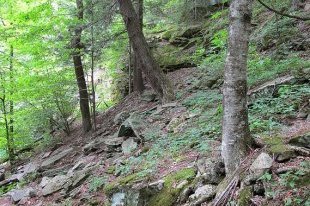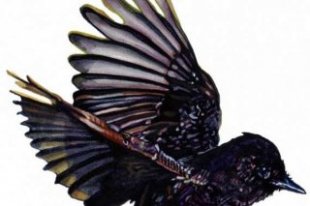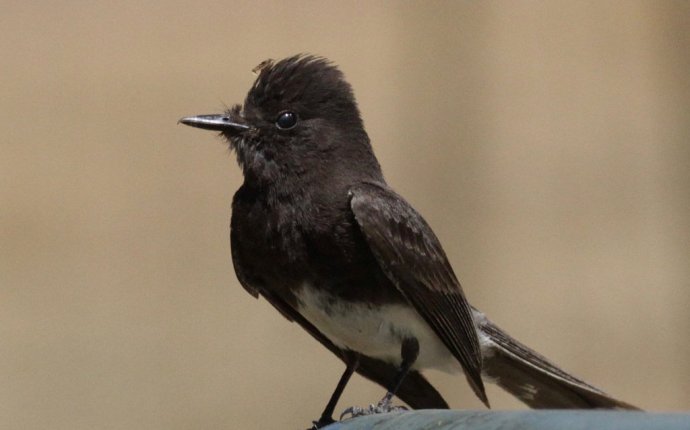
Black Phoebe Symbolism
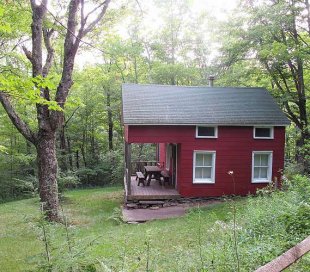 We commonly attribute personal significance to objects—an ex-lovers T-shirt, for example—and, for me, some animals and plants possess a similar totemic power, calling to mind a particular emotion or experience. During a short art and writing residency in the Catskills (the Platte Clove Artists-in-Residence, run by the Catskill Center for Conservation and Development, NY), two such species helped me to come to terms with a recent, cross-country move that I hadn’t realized had been so unsettling.
We commonly attribute personal significance to objects—an ex-lovers T-shirt, for example—and, for me, some animals and plants possess a similar totemic power, calling to mind a particular emotion or experience. During a short art and writing residency in the Catskills (the Platte Clove Artists-in-Residence, run by the Catskill Center for Conservation and Development, NY), two such species helped me to come to terms with a recent, cross-country move that I hadn’t realized had been so unsettling.
On the first afternoon of my residency at Platte Clove, I explored a trail that begins a few steps from the Catskill Center’s cabin porch and makes its way down one of the valley's uppermost gorges to Plattekill Falls. Sunlight filtered through the overstory, unevenly illuminating a forest floor decorated with fallen leaves and eastern hemlock cones.
After walking a short while, I paused and closed my eyes so that I could better pick out the varied woodland sounds. I heard the scratched-slate voice of a grey squirrel, as well as the rapping of a woodpecker’s bill on hardwood, the burble and rush of Plattekill Creek, the lilting queries of red-eyed vireos, and the rustle and twitch of an Eastern chipmunk foraging in the litter. When I again opened my eyes, I was surprised to discover the sources of all these sounds were hidden from view, concealed in the canopy or by dense undergrowth. Even the chipmunk, evidently so nearby, remained invisible to me.
As a resident of the San Francisco Bay Area for two years, I’d grown accustomed to the trails of California’s North and Central Coasts, which pass through relatively sparse groundcover and are generally more broad than their eastern counterparts—more often than not, if you hear something, you can see it, too. In Platte Clove, though, listening to things I couldn’t see, I finally appreciated why an outdoorsy friend of mine who moved from California to New England was initially so unnerved by her summertime hikes in the Northeast. She wrote to me of Massachusetts’ suffocating woods, describing them as a melange of greens that hungrily closed in around her.
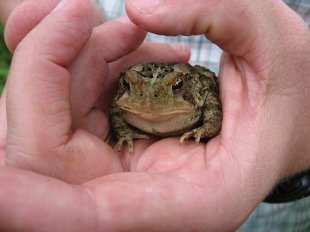 I’m not intimidated by thick forests, but I prioritize vision over hearing, and my naturalist’s preoccupation with obtaining assured species IDs had been indulged and bolstered by two years of California outings. Ten minutes into a short hike in the Catskills, and I grudgingly accepted that my residency species list would be sullied with question marks.
I’m not intimidated by thick forests, but I prioritize vision over hearing, and my naturalist’s preoccupation with obtaining assured species IDs had been indulged and bolstered by two years of California outings. Ten minutes into a short hike in the Catskills, and I grudgingly accepted that my residency species list would be sullied with question marks.
When I arrived at the trail's end, I discovered four local twenty-somethings cavorting in the waterfall's plunge pool. As they shouted and splashed about, I searched for timber rattlesnakes among the broken slabs of bluestone and wild sarsaparilla that cover the south-facing slope of the ravine. I turned up no snakes, but roused a number of American toads. Along with its cousin, the Fowler’s toad, the American toad is abundant in the eastern United States, but doesn’t occur in the west. Absence makes the heart grow fonder, but it also lets you see anew, and I was delighted to have an opportunity to contemplate the toads as I hadn’t in years.
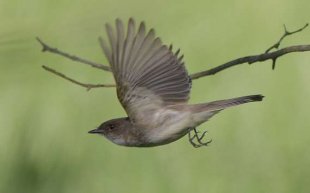 As a young child on Virginia’s Eastern Shore, I routinely captured Fowler’s toads for ogling. One of my earliest experiences of empathy involved such a hostage. Cupping the small, stressed creature in my hands and peering through an opening between my thumbs, I watched the toad’s throat thrum and admired the alabaster skin of its underbody, so finely granulated and damp. I knew by then that toads were considered lowly critters; we associate them with witches, apply their name to people we consider repulsive, and, along with their smooth-skinned anuran kin, insist they need to be redeemed by the kiss of a princess. But there, in my hands, so close to my face that we shared the same air, was proof that the fairy tales had it wrong. The toad was a marvelous and fragile animal, and one that I felt connected to in a way I’d not previously perceived—two organisms, hearts beating, lungs heaving, alive together.
As a young child on Virginia’s Eastern Shore, I routinely captured Fowler’s toads for ogling. One of my earliest experiences of empathy involved such a hostage. Cupping the small, stressed creature in my hands and peering through an opening between my thumbs, I watched the toad’s throat thrum and admired the alabaster skin of its underbody, so finely granulated and damp. I knew by then that toads were considered lowly critters; we associate them with witches, apply their name to people we consider repulsive, and, along with their smooth-skinned anuran kin, insist they need to be redeemed by the kiss of a princess. But there, in my hands, so close to my face that we shared the same air, was proof that the fairy tales had it wrong. The toad was a marvelous and fragile animal, and one that I felt connected to in a way I’d not previously perceived—two organisms, hearts beating, lungs heaving, alive together.
I recalled that boyhood encounter as I observed the toads of Plattekill Clove and I felt an upwelling of gratitude and emotion, brought on by the chance to see toads I’d missed more than I’d known.
The daylight was reddening and beginning its retreat by the time I returned to the trailhead. An Eastern phoebe chipped at me from its perch on a low-hanging branch near the cabin. Light in color and smallish, I guessed the bird was a female. She pumped her tail and flitted from branch to fence post and back, calling persistently. I offered a few pitiful chip replies and watched her for a minute before heading inside.
